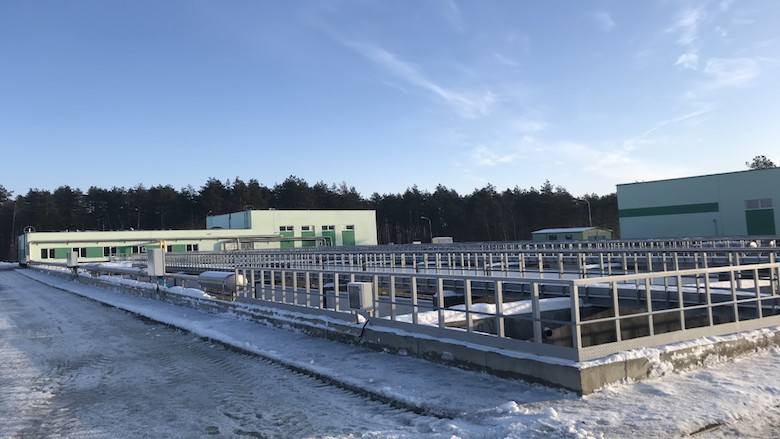Challenge
Belarus’s WSS sector faced numerous challenges since gaining independence in 1991. There were problems with reliability, quality and safety of water services. A lack of financial resources due to low fee collection rates, high subsidies and low tariffs contributed to a deterioration of water supply systems. Without additional investments for plant and network rehabilitation, efficiency and capacity, this trend would continue and result in lower service levels and less safe drinking water.
Approach
The project aimed to increase access to water supply services and to improve the quality of water supply and wastewater services in selected urban areas in all six (6) oblasts through three different approaches: providing investments for infrastructure to rehabilitate and expand water supply and sanitation services, support to utilities in the preparation of project pipelines, and additional sector modernization efforts - including benchmarking utility performance and conducting reviews of current norms and standards to enhance utility performance. To improve water supply and sanitation services, the project helped finance the conversion of surface water supply to groundwater supply, the installation of iron removal stations and water meters, the installation of pumping stations, sludge dewatering services, collection networks and modern equipment for monitoring stations and small laboratories. Support for preparation of project investments was manifested in financing for feasibility studies and detailed designs, construction management, investment monitoring and training, diagnoses of sector efficiency, the development of operations and maintenance programs, sector planning, cost accounting and monitoring and evaluation services.
Results
The implementation of the Belarus Water Supply and Sanitation Project (WSSP) resulted in improving the access to and quality of water supply and sanitation services in Belarus with the following key outcomes:
The project met or exceeded most of its targets and which has resulted in increase…. in the e with the following key outcomes:
13,613tpy of Biochemical Oxygen Demand (BOD)-5, 215tpy of phosphorus pollution loads and 1,428tpy of nitrogen pollution loads were removed by the treatment plants. There was also 21,218 of reduced volume of BOD pollution loads transported in unreliable sewerage transmission systems - improving the quality of wastewater treatment services.
For 15 of the participating utilities, efficiency improved as average electricity consumption decreased from 0.74 kWh per m3 in 2015 to 0.67 kWh per m3 in 2018.
Operating costs were also reduced for 21 of the utilities that were supported by the project, as the average operating cost coverage ratio was 1.37 in 2018. The average operating cost coverage ratio for all 37 utilities was 1.23.
In terms of access to improved water services, the project met or exceeded its beneficiary targets as follows:
Access to improved quality of water was provided to 611,766 people by 2018.
47,520 individuals benefitted from access to better sanitation services.
154km of transmission and distribution pipelines were laid or replaced by 2019.
96km of wastewater collectors were laid.
An improved quality of water was provided to 611,766 people.
By 2017, 7,390 consumers received greater access to water supply services.
Bank Group Contribution
The World Bank, through the International Bank for Reconstruction and Development (IBRD), provided an initial loan of US$60 million and an additional loan totaling US$90 million to the Belarus Water Supply and Sanitation Project.
Partners
At the national level, the World Bank worked with Belarus’s Republication Unitary Enterprise, which reports to the Ministry of Housing and Utilities, as well as the Ministry of Finance, in implementing the project. At the local level, the Project Implementing Unit (PIU) worked with six municipalities, 32 WSS/multi-utilities and eight additional service providers in implementing the project.
Moving Forward
The project built on improvements that were previously made in the WSS sector since the implementation of the Government’s National Water Development Program “Chistaya Voda” to increase access to improved water supply and sanitation services. Risk assessments, technical studies and cost and result estimates should be produced prior to implementing further improvements.
Beneficiaries
611,766 people benefitted from improved water quality and 47,520 people gained access to better sanitation between 2008-2019. Lisa Radchenko, a resident of Borovukha, says that prior to the project’s implementation, “our bathtub became dirty and soiled, looking like it’s made of crude iron. We had to store water and boil it all the times until recently – when our water became clean and clear and some specialists say we can drink it without even boiling.”
Learn More
Belarus (2008-2019) Water Supply and Sanitation Project.
How a water supply and sanitation project helped Belarus exceed expectations (2020)
In Belarus: Hot Water Year Round (2014)
Getting Clean Water in Belarus (2013)
What happens in your toilet ends up where? (2012)
Multimedia
Berezino Mechanical Cleaning Shop. Photo Credit: Dzimitry Buronkin, World Bank.
